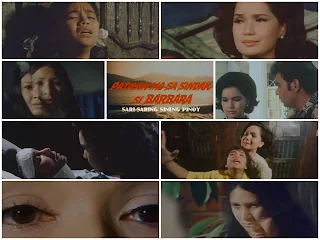Luisito Lagdameo Ignacio's evocative Abenida (BG Productions International, 2023) is not afraid to ask questions about the nature of love and the boundaries of normal feelings. It’s a slow-moving and depressing film, that seems best for those with a taste for long pauses of silence. The acting duo of Allen Dizon and Katrina Halili create an atmosphere of tension and ambiguity. Abenida however, is not only a film about desire. Ignacio tells the story in a manner which suggests hidden meanings. Abe’s (Dizon) moral ambiguity is a fact of life. Everyone in the film is desperately lonely and unhappy. The surroundings intensify the gloomy mood. The community's claustrophobic houses are almost impossible to live in. This suffocating, threatening atmosphere ultimately gives birth to violence. The lives of his characters are banal and tedious, but at the same time intensely irrational. Abenida is a highwire act in maintaining dramatic momentum since the entire movie takes place from one man’s perspective. The film displays a rigorous control of mise-en-scène and mood, crafting something out of a character study of Dizon's docility. As Abe, his performance is central to Abenida's success. Dizon continues to be a powerful on screen presence, disguising layers of darkness beneath an affable exterior. There is something about him, particularly in his relationship with Aunt Siony (perfectly played by Gina Pareño). But beyond these feelings of unsettlement comes a deep sympathy for Abe who simply has nothing else to live for but his love for Nida (Halili).
Screenplay: Ralston Jover
Director of Photography: T.M. Malones
Editing & Sound: Gilbert Obispo
Production Design: Cyrus Khan
Music: Jake Abella
Directed By: Luisito Lagdameo Ignacio










